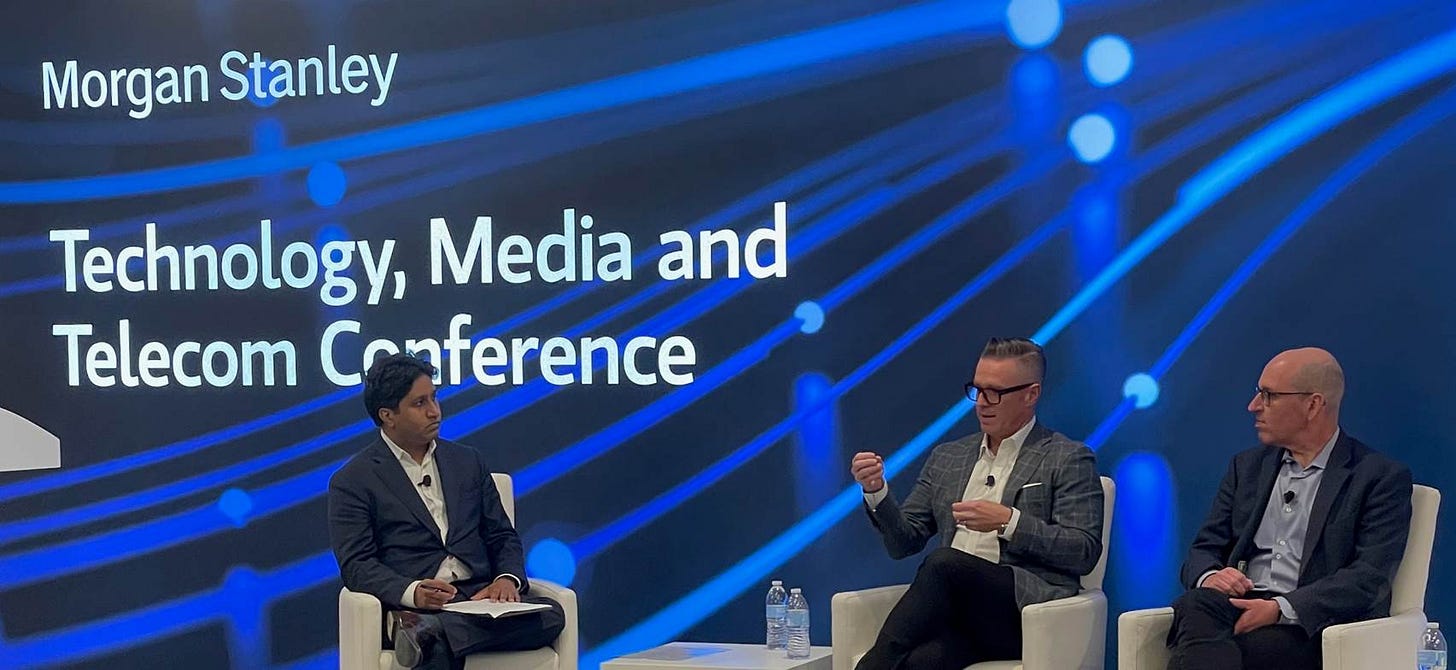Will AI replace Wall Street research?
AI as "lead left" banker?
JPMorgan Chase recently unveiled a new chatbot “research analyst”. This development has sparked numerous inquiries about its potential impact on the future of the Wall Street equity research (“sell-side”) profession. I will address the topic in this article.
I like to start from first principles. Let's first understand why Wall Street equity research exists.
Why does sell-side equity research exist?
Sell-side equity research is an aggregator that connects the fragmented base of investors and companies.
Investors: There are thousands of equity investment funds. Smaller funds, in particular, depend on the sell-side to access the management teams of publicly traded companies (or companies about to go public).
Without Wall Street, these smaller funds will have no management access because public companies typically allocate their investor relations resources to serve their largest shareholders.
This is why sell-side analysts organize conferences, offering clients the opportunity to participate in one-on-one sessions with company CEOs, for a fee of course.
Companies: While we often think of the S&P 500 companies, many smaller firms with lower market capitalizations also desire investor attention. Sell-side research provides the necessary reach for these companies to connect with potential investors. Even S&P 500 companies benefit from the sell side’s reach to widen its reach to a fragmented investor base that their internal investor relations can’t reach.
In essence, Wall Street adds significant value through relationship-building and connecting rather than through research. By now, investors understand this, which is why they continue to do business with the sell-side despite the establishment of Reg FD1 and the rise of MiFID II (though the latter is rolling back)
You might have the preconception that sell-side research is about analyzing companies, performing financial modeling, and publishing reports. Yes, the job involves these tasks, but these tasks are not the primary metrics for their performance and thus compensation.
What the sell-side research is:
Building Relationships: So much of the job is building relationships with people who help you add value to clients. That means connecting on a personal level with investors, company management, and professionals in your covered sector.
Providing Stock Movement Intelligence: Analysts offer insights into what is moving stock prices that are valuable to investors.
Given the relationship-driven value-add, I don’t think AI will ever be able to replace sell-side research.
Why do investors still use the sell side?
At this point, many investors are integrating AI into their workflows to handle lower-value tasks (such as parsing a 10-K). Despite this, there remains a strong reliance on sell-side analysts. Here are the reasons:
Corporate Access: Many investors stress the importance of assessing the people (as they should, but not all do) who run the companies they are researching. Without the sell-side, smaller funds would struggle to secure one-on-one access to company management. Human relationships, especially those at the top levels, must be built by people with a personal touch. I’m skeptical that AI could replace humans in the task of connecting with other humans.
Primary Research: Particularly in an era where information is freely available online, primary research is more important than ever. Senior sell-side analysts attend conferences and engage with customers, suppliers, and resellers to gain insights into industry trends and inflection points before they show up in financial statements. Investors rely on analysts to share these insights, particularly when they cannot attend every relevant conference themselves. AI models are built on existing information, which means they lack the actionable insights that analysts gather from firsthand interactions. Analysts are also motivated to protect their moat by ensuring AI does not free-ride on their unique, valuable information.
Positioning and Flow: Understanding market sentiment and the actions of other participants is key to making money for many market participants. Sell-side analysts possess such knowledge from their daily interactions with a broad array of investors. Building and maintaining these investor relationships requires interpersonal skills that are difficult for AI to emulate.
Capital Market: A respected analyst’s coverage can significantly impact a company’s stock performance by increasing its visibility among investors, regardless of whether a company is already public or going through the IPO process (same reason why management must do roadshows) These personal connections are vital for gaining trust and investment. I’m skeptical that AI could play a lead role in such personal and high-stakes settings (LLM as “lead left” on an IPO?).
Pattern Recognition: AI models predict based on historical data. While investing involves pattern recognition, every actionable investment idea may involve nuances that we have never seen before. That’s where AI will always struggle. Furthermore, as AI-based investors become more prevalent, they might create market inefficiencies that could, in turn, present opportunities for human investors. Market inefficiency will always be somewhere.
In summary, I think AI will for now be a time saver in equity research, it cannot fully replace the relationship-building, primary research, and industry insights that sell-side analysts can provide. The most invaluable intellectual capital will continue to reside with senior sell-side analysts who have accumulated decades of proprietary knowledge and insights.
The role of AI in sell-side research
AI has the potential to significantly benefit Wall Street research by handling routine, low-value tasks. As someone who has worked as a junior analyst, I understand how much time is wasted on the job that could be reallocated to higher-value activities.
For example, financial advisors like Harold from the Topeka, Kansas branch who may demand access to sell-side analysts2 for routine queries, could now be redirected to AI tools for basic information like EPS data. This shift could free up analysts to focus on higher-value activities, such as building relationships, understanding market trends, and producing insightful reports.
Implications for equity research professionals
For senior sell-side analysts, continue to excel by leveraging and deepening your relationships. Your established networks and the trust you've built are your greatest assets.
For current associates, the advancement of AI presents a valuable opportunity. By utilizing AI tools to handle routine and low-value tasks, you can focus on gaining a deeper understanding of your industry and the companies you cover. This will allow you to provide more insightful and strategic analysis, which is increasingly important as AI takes over more of the basic functions.
For those aspiring to break into the industry, the competition remains fierce. Moreover, you can no longer rely on possessing technical skills as the main differentiator since AI can do them more quickly and accurately. Instead, you need to stand out through your process, judgment, and interpersonal skills. The industry is looking to hire those with the potential to be future lead analysts who can build and maintain high-power relationships within the capital market ecosystem.
Conclusion
AI is generally a positive development for the industry. It allows for the automation of lower-value tasks, freeing up human analysts to focus on higher-value activities that truly benefit clients, with no expected threat to core relationship-driven value-adds.
If you have opinions on this matter, please share.
Thanks for reading. I will talk to you next time.
If you want to advertise in my newsletter, contact me 👇
Resources for your public equity job search:
Research process and financial modeling (10% off using my code in link)
Check out my other published articles and resources:
📇 Connect with me: Instagram | Twitter | YouTube | LinkedIn
If you enjoyed this article, please subscribe and share it with your friends/colleagues. Sharing is what helps us grow! Thank you. 🙏
Before Reg FD, the sell-side added value of disseminating information more quickly and selectively to top clients, incenting investor clients to do business with the firm
Financial advisors don’t pay nearly enough commissions to have access to the bank’s research analysts, just to be clear.





